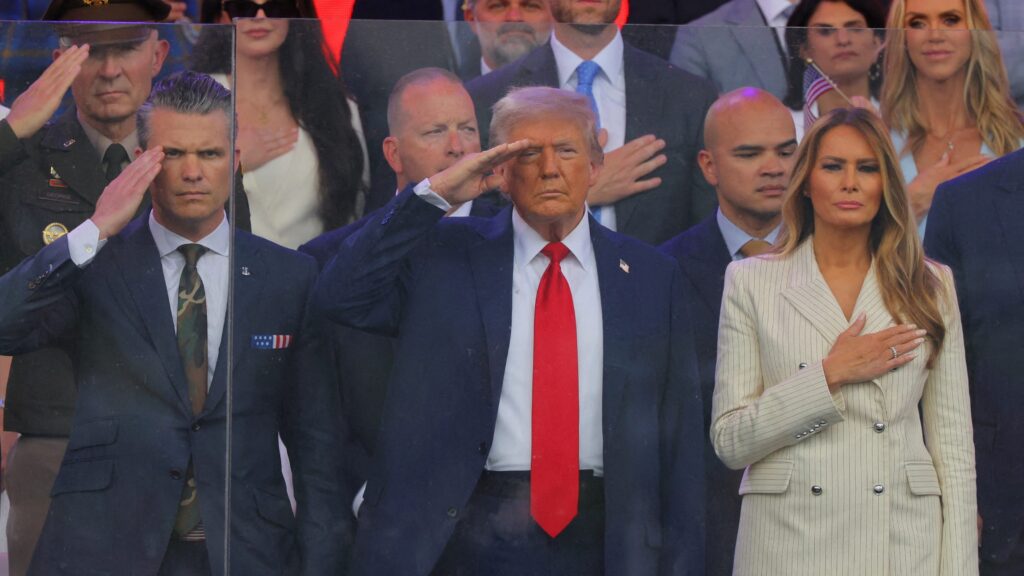President Donald Trump’s military parade, commemorating the 250th anniversary of the U.S. Army, made headlines despite being relatively low-key. The procession featured troops, tanks, drones, and even a robot dog, drawing applause from spectators along Constitution Avenue. Trump defended the parade as a celebration of American victories, marking his 79th birthday with a rendition of “Happy Birthday.”
However, the parade’s significance paled in comparison to the widespread “No Kings” protests it incited across 2,000 communities. Millions of Americans voiced opposition to Trump’s perceived expansion of presidential powers, reminiscent of historic civil rights movements and anti-war protests. The pushback against Trump intensified amid a sense of growing peril, highlighted by violent incidents and escalating international tensions.
While the parade showcased military might in Washington, critics raised concerns about its authoritarian undertones. Concurrently, Trump’s deployment of troops to Los Angeles for immigration protests fueled dissent. The protests, including peaceful demonstrations and sporadic clashes, underscored a nationwide resistance to perceived threats to democracy.
The juxtaposition of celebratory military displays and grassroots protests reflected a divided America grappling with political turmoil. Trump’s restrained speech at the parade contrasted with his usual rhetoric, as supporters and protesters alike invoked historical references to liberty and resistance. The events of the day, from festive parades to civil unrest, captured a nation at a crossroads, navigating conflicting visions of patriotism and dissent.

